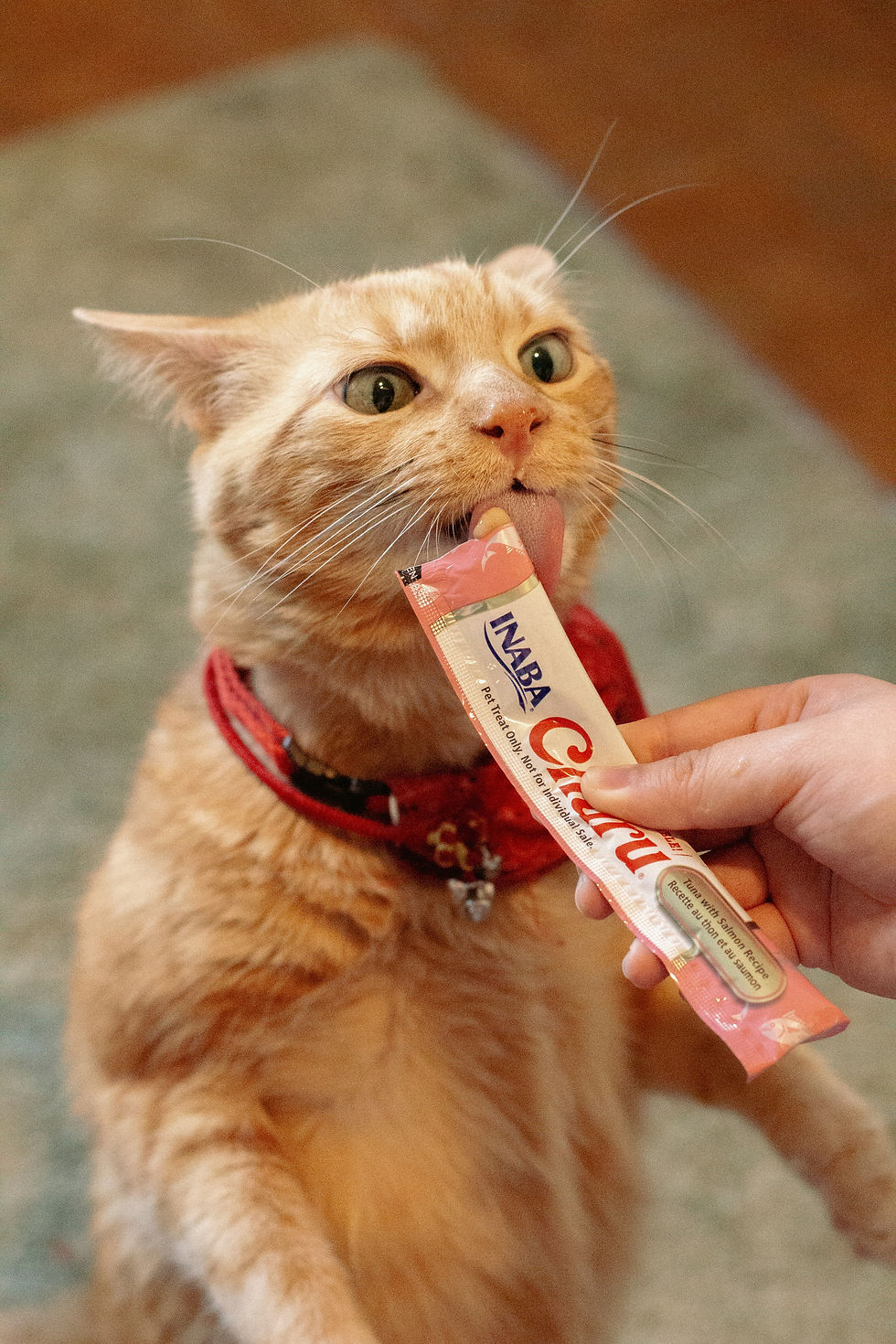How to Medicate Your Pet Without the Meltdown: Tried & True Techniques
- kharrison1010
- Aug 6
- 3 min read
Giving your pet medication can sometimes feel like a magic trick gone wrong. One minute, you’re holding a pill with confidence—and the next, your dog is hiding under the couch or your cat is launching a full-scale protest. But don’t worry—you’re not alone, and it doesn’t have to be a daily drama. Here are some veterinarian-approved techniques to help make medicating your dog or cat easier, safer, and (dare we say?) stress-free.

🐶 For Dogs
1. The Power of the Pill Pocket
Specially designed pill pockets or soft treats are made to hide tablets and capsules. Just pop the medication inside and hand it over like a treat. Most dogs don’t think twice!
2. The Three-Treat Trick
Give your dog three treats: one without medication, one with the pill hidden inside, and another plain treat right after. The excitement of multiple rewards often distracts them from the sneaky middle snack.
3. Mix it with Something Tasty
If your dog isn’t fooled by pill pockets, mix the medication into a spoonful of peanut butter, canned dog food, cheese spread, or plain yogurt. Just check with your vet first to make sure the medication is safe to mix with food.
4. Manual Pill Administration (if needed)
For stubborn cases:
Gently open your dog’s mouth from the top.
Place the pill at the back of the tongue.
Close their mouth and stroke their throat to encourage swallowing.
Follow with water and a treat!
😺 For Cats
1. Pill Paste or Soft Treats
Some cats will tolerate pill paste (similar to pill pockets) or treats designed for hiding medication. Try warming the treat slightly to release aromas—tempting even to the pickiest feline.

2. Crush and Mix (If Vet Approved)
Some tablets can be crushed and mixed with wet food or tuna water, but always check with your veterinarian—not all medications are safe to crush or mix.
3. Wrap & Pill (a.k.a. the Burrito Method)
Wrap your cat snugly in a towel (like a purrito).
Gently open their mouth and place the pill near the back.
Close the mouth, tilt the head up, and stroke the neck.
Offer praise, treats, and an escape route afterward.
4. Use a Pill Popper
This syringe-like device helps you place a pill directly into your cat’s throat without getting your fingers too close to the teeth.
💉 What About Liquid Medications?
For both cats and dogs:
Use a marked syringe or dropper provided by your vet.
Administer slowly into the side of the mouth (not straight down the throat).
Have a towel nearby—for them and for you.
🐾 Tips to Reduce Stress for Everyone
Practice handling regularly: Get your pet used to having their mouth or head touched even when it’s not medication time.
Stay calm: Pets pick up on your anxiety, so take a deep breath and approach confidently.
Reward generously: Use high-value treats or a favorite toy right after.
💬 When in Doubt, Ask Your Vet
Don’t struggle alone. If your pet absolutely refuses to take medication, reach out to your veterinarian. Many medications come in flavored liquids, topical forms, or long-lasting injections that may be easier alternatives.
Final Thoughts
Medicating your pet doesn’t have to be a wrestling match. With the right tools, tasty tricks, and a little patience, you can turn it into a routine that works for both of you. Remember: you’re not just giving a pill—you’re giving them the best shot at feeling better.



Comments